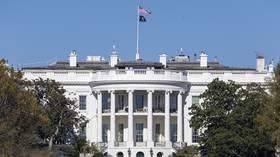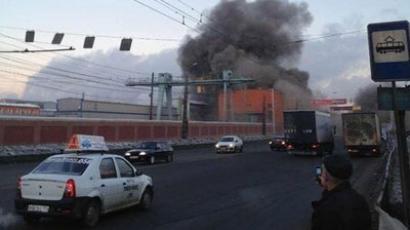'Largest since Tunguska': Chelyabinsk meteorite may take second place for size in over a century

Friday’s meteorite which struck Chelyabinsk carried a mass of around 40 tonnes, possibly making it the largest recorded object to hit the Earth since Tunguska. It was around 15 meters across when it entered the atmosphere, according to one expert.
“It was a very, very, powerful event,” astronomer at the University of Ontario, Margaret Campbell-Brown, told Nature.com. But despite its size, it wasn't the meteorite's landing that caused the damage. "The sonic boom was just immense, and it was the boom that caused the destruction – not the actual landing of the meteorite. It was the amazing explosion in the atmosphere as it broke the sound barrier that caused the problem," Professor of Planetary Science at The Open University, Monica Grady, told RT. The meteorite – which left more than 1,200 people injured – was undetected until it hit the atmosphere."I'm not aware of anyone who saw this coming," Heiner Klinkrad, head of the European Space Operations Centre in Germany, said.And the question of whether anyone has the ability to do so still remains unclear. "From a long way away, these things look very small to the eye. So you need to do a lot of work with telescope science to be able to see them at any time in advance. But it must be possible," Astro Physicist Piers Corbyn told RT. While many fear the meteorite may leave lasting damage on the region, Dr. Julia Tjus from the University of Bochum's faculty of physics and astronomy says such fears are unwarranted."It’s a stone that comes from the heavens and the main impact is that the stone generates a pressure wave in the atmosphere. This is what’s dangerous because it breaks windows and it has a lot of power. Once that’s gone, there’s no further risk," Tjus told RT. Scientists have compared the incident to the century-old Tunguska event, a huge explosion allegedly caused by a fragment of a comet or meteor.“It looks like it was something like Tunguska – a 60-meter diameter cosmic body, which fell into the Tunguska taiga in 1908,” said Professor Oleg Malkov, Head of the Star Clusters Physics Department at the Russian Science Academy Institute of Astronomy, as cited by Komsomolskaya Pravda daily. According to estimates, the energy of the Tunguska blast may have been as high as 50 megatons of TNT, equal to a nuclear explosion. Some 80 million trees were leveled over a 2,000-square-kilometer area. The Tunguska blast remains one of the most mysterious events in history, prompting a wide array of hypotheses on its cause, including a black hole passing through Earth and the wreck of an alien spacecraft.It is believed that if the Tunguska event had happened four hours later, due to the rotation of the Earth it would have completely destroyed the city of Vyborg and significantly damaged St. Petersburg. The Tunguska event also prompted debate and research into preventing or mitigating asteroid impacts.
Between Tunguska and Chelyabinsk, Russia has witnessed at least three such events. In 1922, a meteor shower rained down on the village of Tsaryov near Volgograd in Southern Russia. Some 1.6 tons of meteor fragments were found there, with the biggest weighing almost 300 kilograms. Siberia appears to be a real meteor magnet: In 1947, the Sikhote-Alin Mountains were hit by an iron meteor. An estimated 23 tons of extraterrestrial material were eventually found in the area. And just over a decade ago, another asteroid fell near the Siberian village of Vitim. The explosion of the Vitimsky meteorite was relatively weak, reaching only approximately 200 tons of TNT.As for smaller meteorites, hundreds of them strike the Earth’s surface every year, though only 10 to 20 are detected.“It’s impossible to trace them. We only know of big asteroids approaching. I mean space is swarming with little stones – it’s no revelation, it’s a fact we have to come to terms with. The earth is hit by relatively little space objects every hour,” said Kosmopoisk (‘Cosmosearch’) NGO head Vadim Chernobrov, Kommersant daily reported. Such meteorites usually reach the surface Earth burned down by the atmosphere and too small to cause damage. According to statistics, only 1 in 100,000 asteroids is potentially destructive. The oldest discovered meteor was 4.6 billion years old. The largest, the Hoba meteorite in Namibia, weighs over 60 tons. The largest-ever accumulation of meteors was found in the Antarctic in 1979. Finding a fragment of freshly-fallen meteorite takes a great deal of luck – considering that 97 percent of space rocks found on Earth have fallen long ago. At the same time, being injured by a falling meteorite is an even rarer event: According to NASA, there is a "1 in 3,200 chance of anyone being hit."















